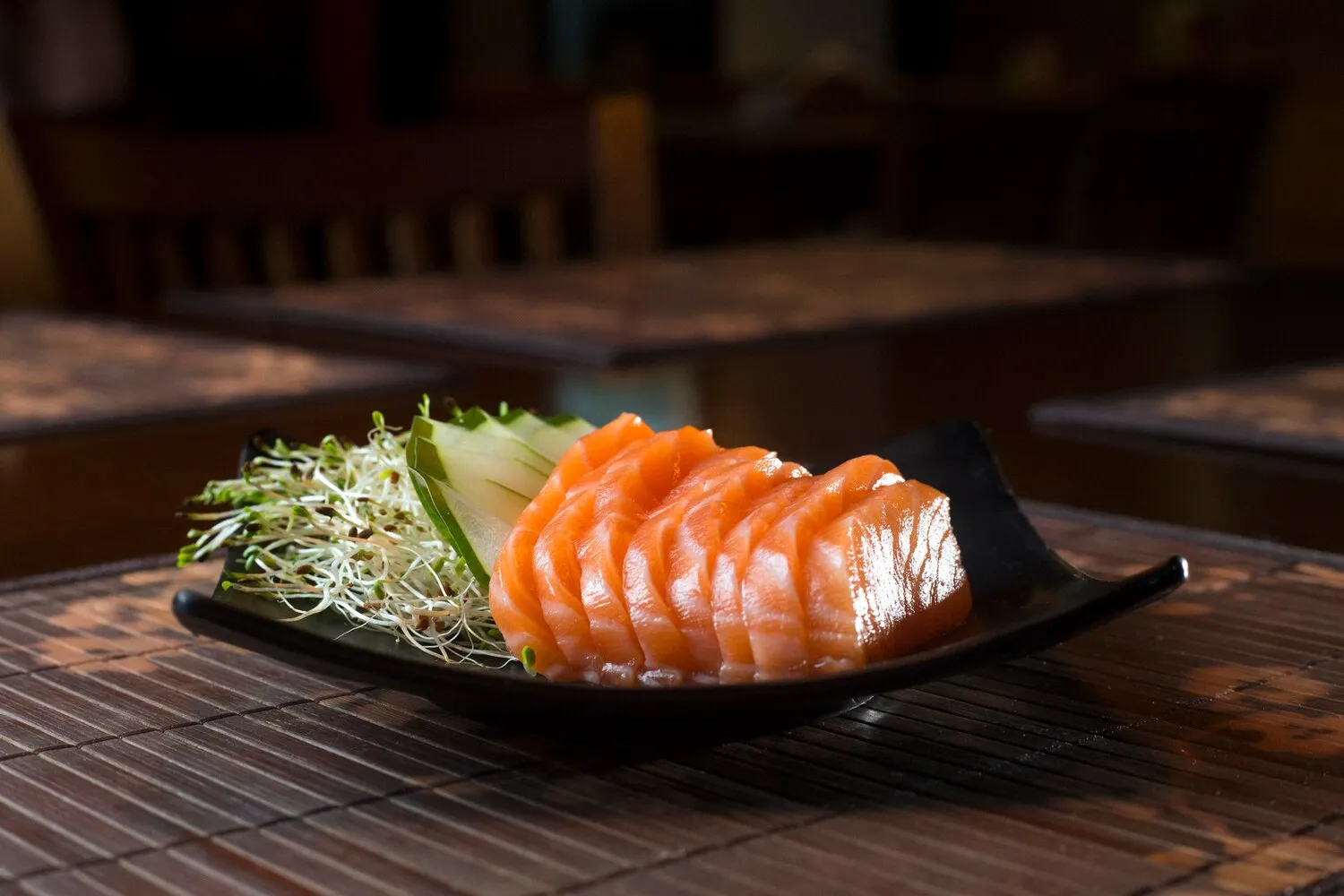
Sashimi Salmão
Salmon sashimi.
Nutrition Facts
* The % Daily Value (DV) tells you how much a nutrient in a serving of food contributes to a daily diet. 2,000 calories a day is used for general nutrition advice.
Sashimi, including salmon sashimi, evolved from earlier methods of preserving and preparing seafood in Japan. It transitioned from a simple method of preservation to a culinary art form during the Muromachi period (1336 to 1573), when refined knife skills and presentation became integral parts of Japanese cuisine. The availability and popularization of salmon sashimi are more recent, becoming widespread only in the late 20th century.
Sashimi, including Salmon sashimi, is deeply rooted in Japanese culinary tradition and embodies a respect for the purity and freshness of ingredients. It is a symbol of refined dining and is often enjoyed during special occasions.
Presentation Matters
The presentation of sashimi is highly valued. It is often arranged artistically to enhance the dining experience and reflect the beauty of nature. Attention is paid to color, texture, and balance in the arrangement.
Respect for Ingredients
Sashimi embodies a deep respect for the ingredients. Only the freshest, highest-quality fish is used, and minimal processing is done to preserve its natural flavor and texture.
Seasonal Significance
Certain types of sashimi, including specific varieties of salmon, may be more highly prized during certain seasons when their flavor and texture are at their peak.
Salmon sashimi offers a clean, fresh, and subtly sweet flavor profile, complemented by umami and a rich, oily texture.
The primary flavor is the natural taste of fresh salmon, which is inherently mild and slightly sweet. The fat content of the salmon provides a rich, buttery texture that melts in the mouth. It's typically served with soy sauce, which adds a salty and umami dimension, wasabi for a spicy kick, and pickled ginger (gari) to cleanse the palate between bites. The combination creates a harmonious balance of flavors and textures.
Choosing the Right Salmon
Select salmon that is sushi-grade, indicating it's safe to eat raw. Look for vibrant color, a firm texture, and a fresh, clean smell. Avoid salmon that appears dull or has a fishy odor.
Proper Cutting Technique
The way the salmon is sliced affects its texture and flavor. The slices should be cut against the grain to enhance tenderness. A very sharp knife is essential for clean, precise cuts.
Serving Temperature
Serve salmon sashimi chilled, but not too cold. Allowing it to slightly warm up enhances its flavor. Arrange the slices artfully on a plate with garnishes like shiso leaves or daikon radish.
Condiment Etiquette
Use wasabi sparingly, as it can easily overpower the delicate flavor of the salmon. Dip the salmon lightly in soy sauce, ensuring not to drench it. Use the pickled ginger to cleanse your palate between different types of sushi or sashimi.
Explore additional Japanese dishes and restaurants
Explore JapaneseDiscover top dining spots and culinary experiences in Nova Trento.
Explore Nova TrentoLearn more about the food culture, restaurant scene, and culinary heritage of Brazil.
Explore Brazil